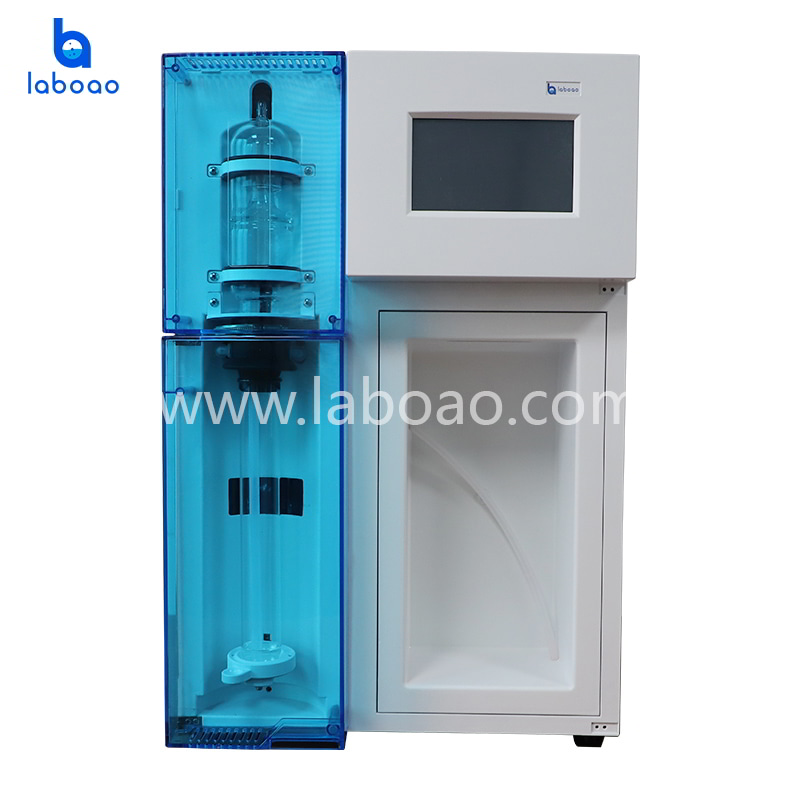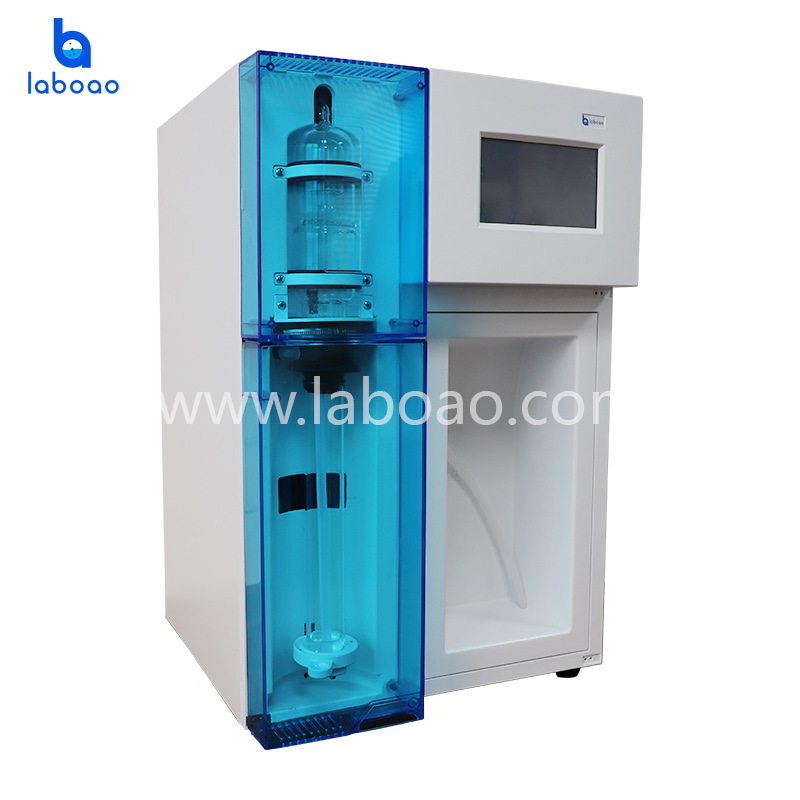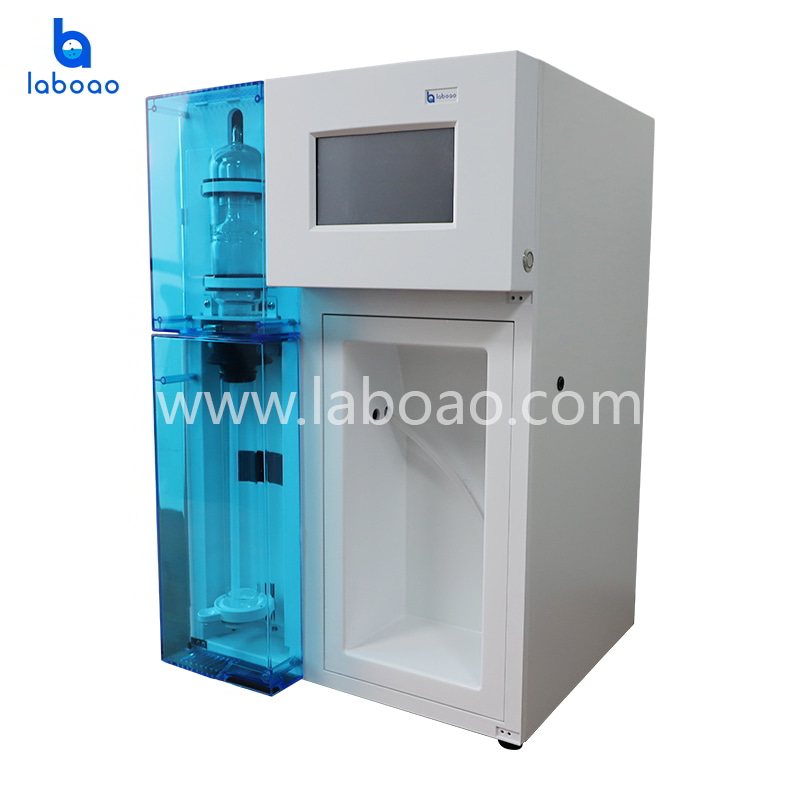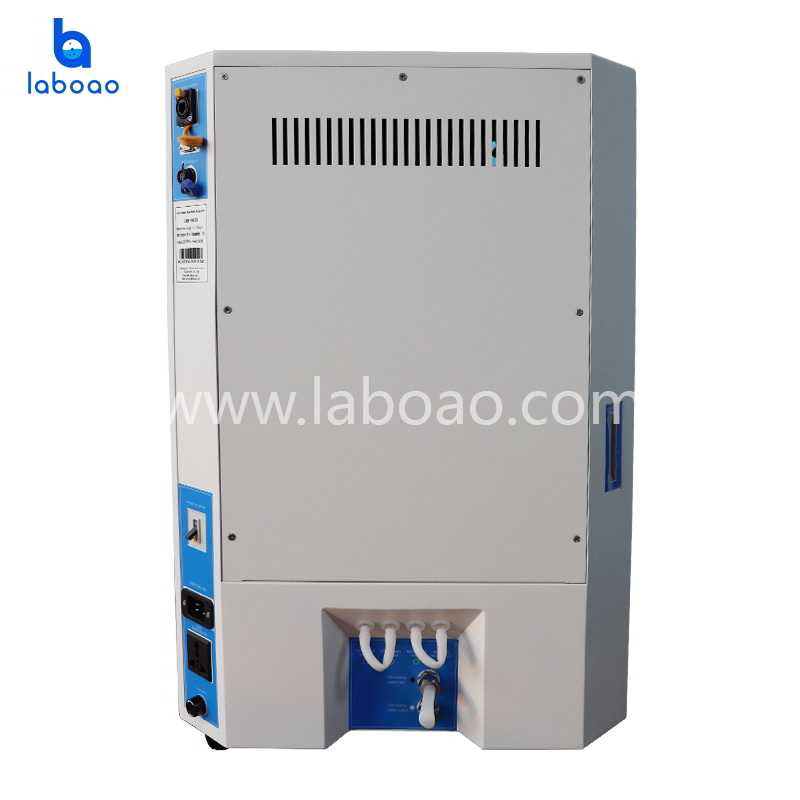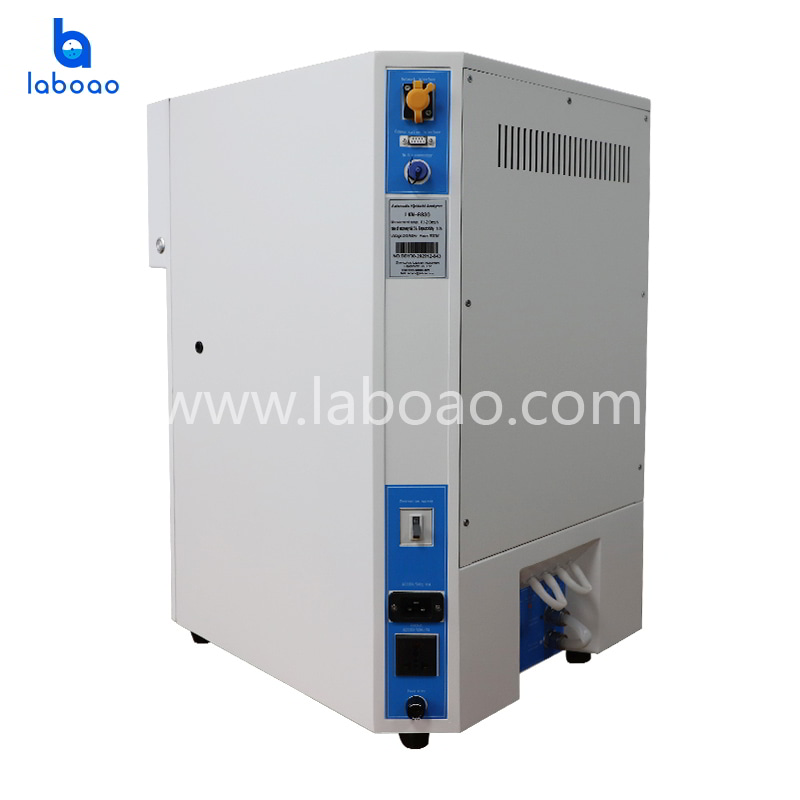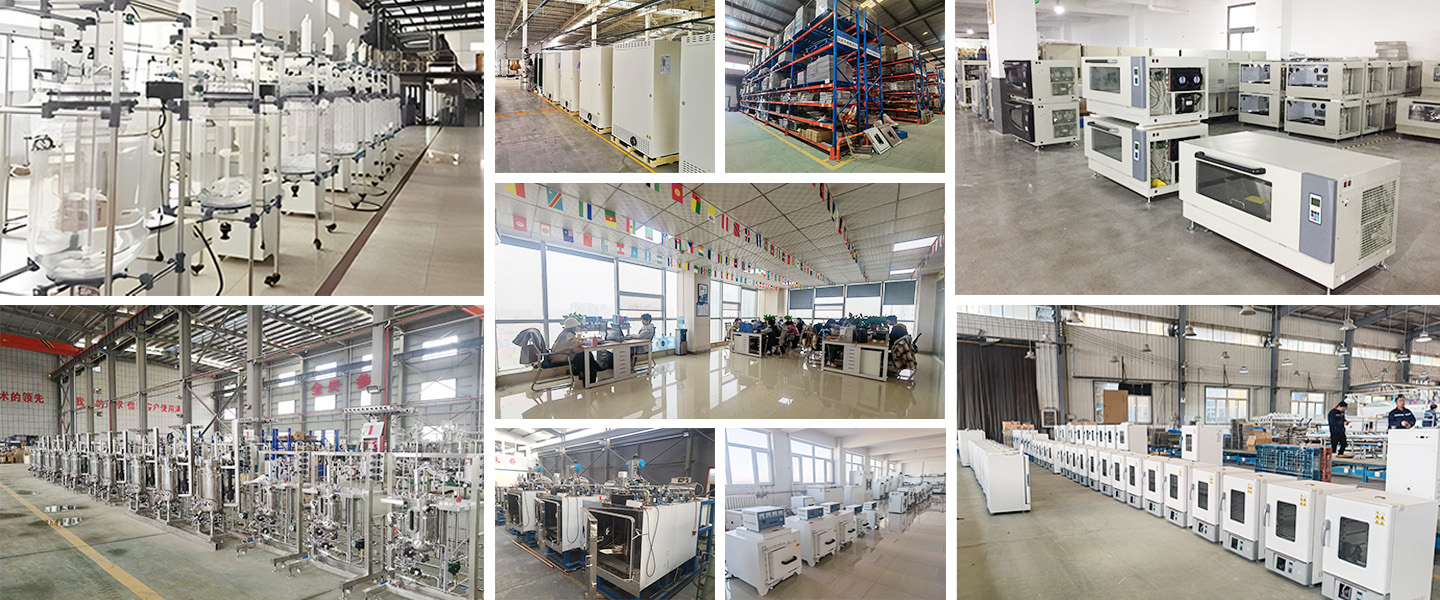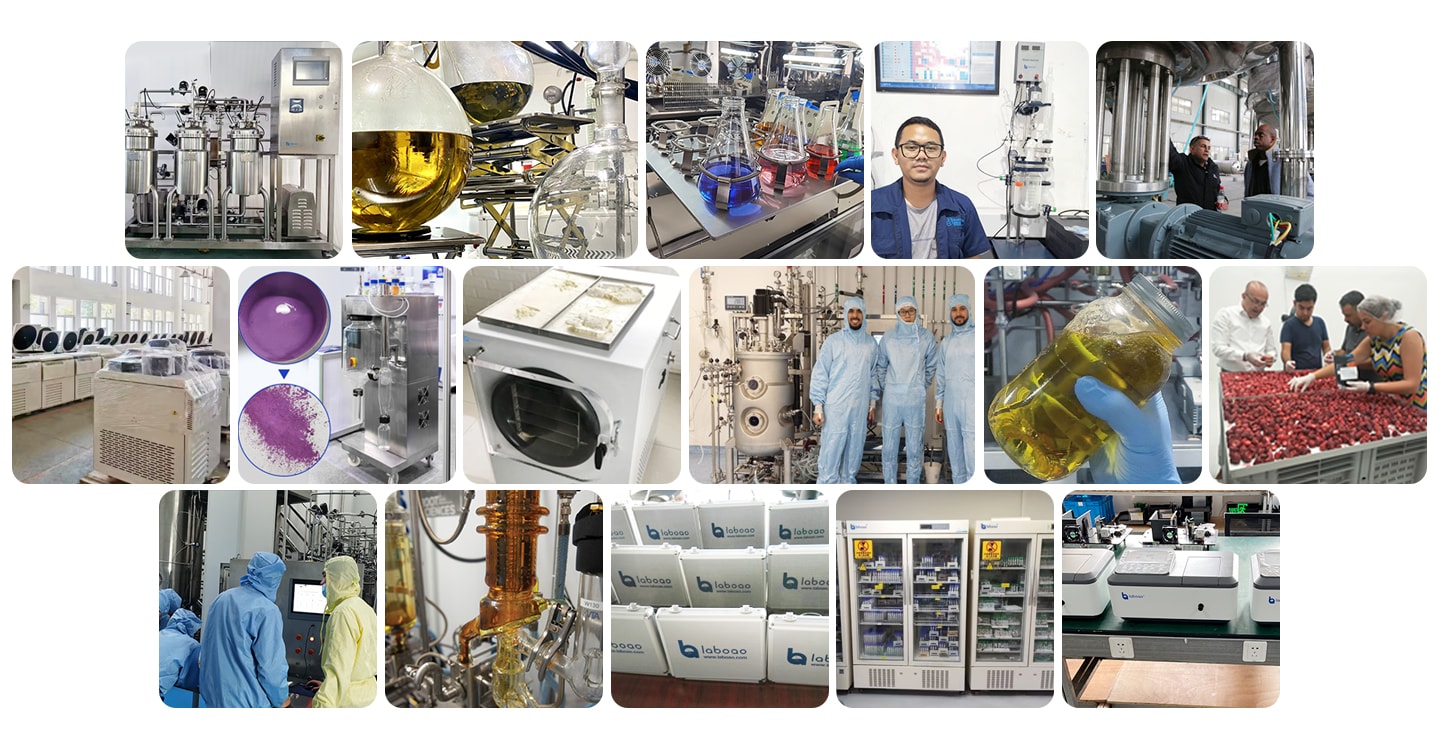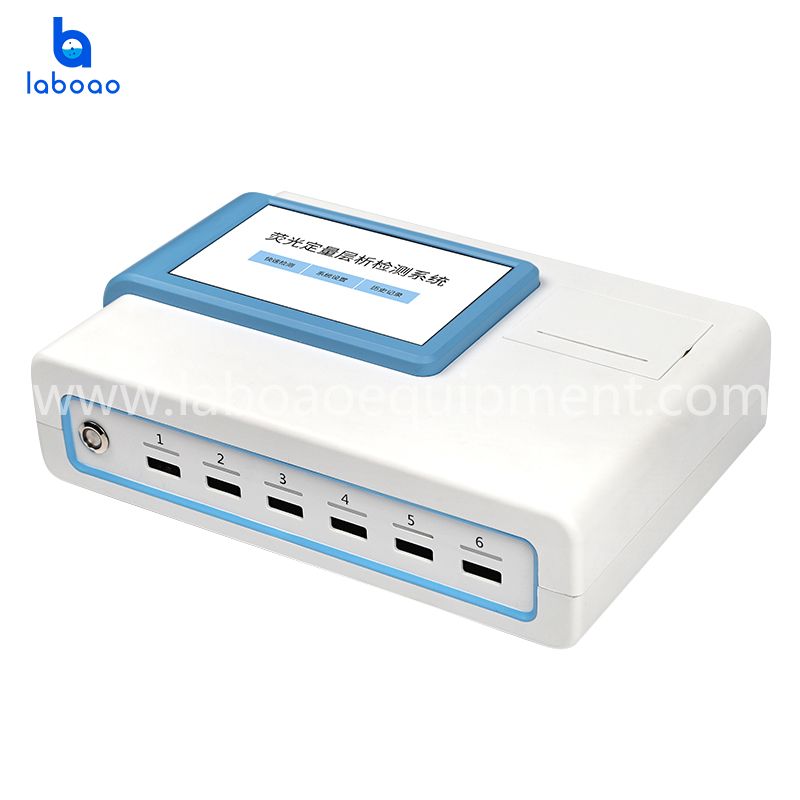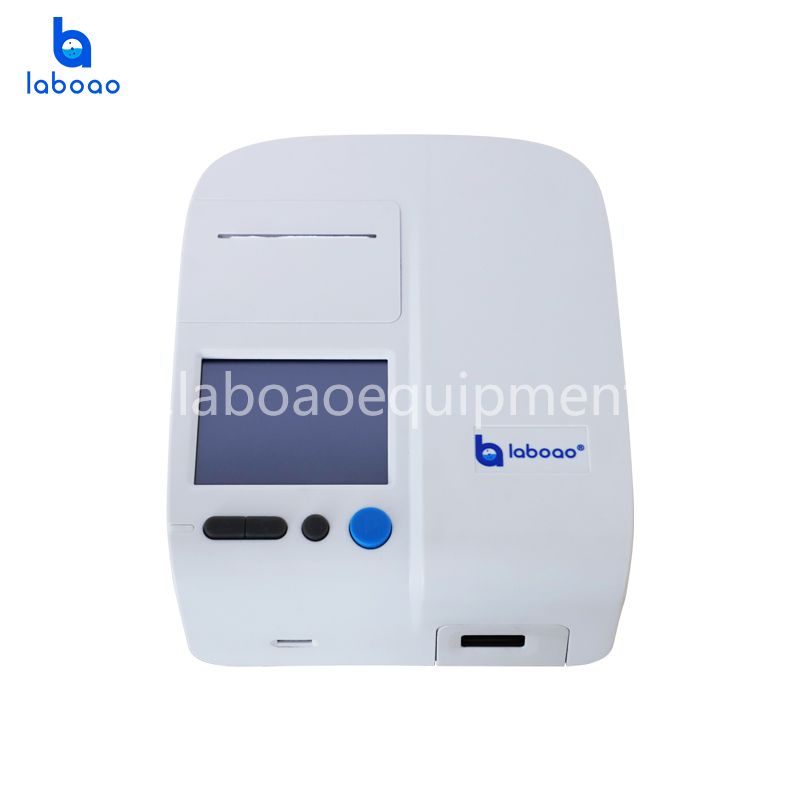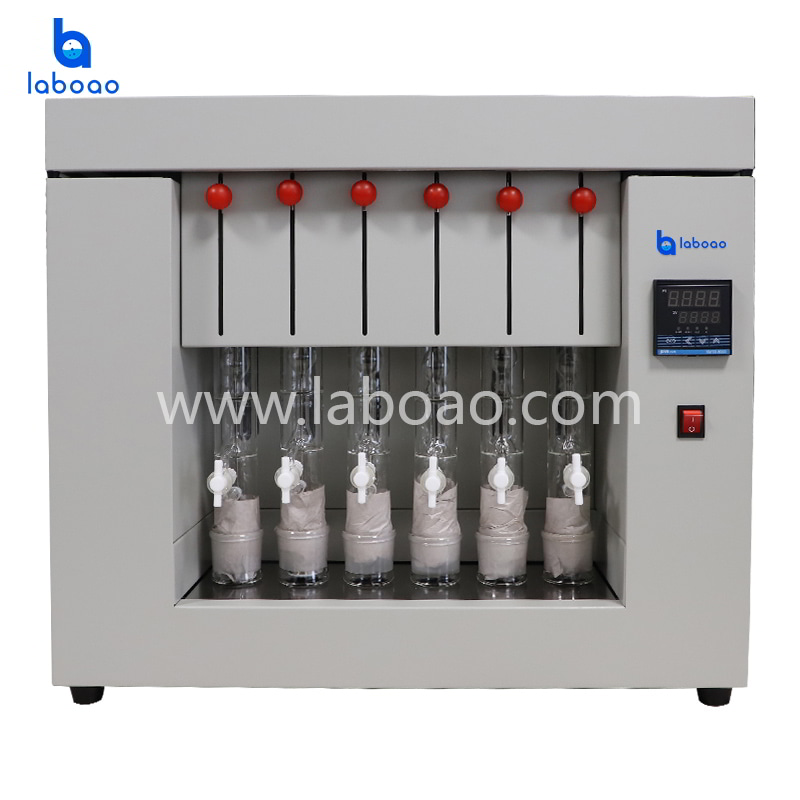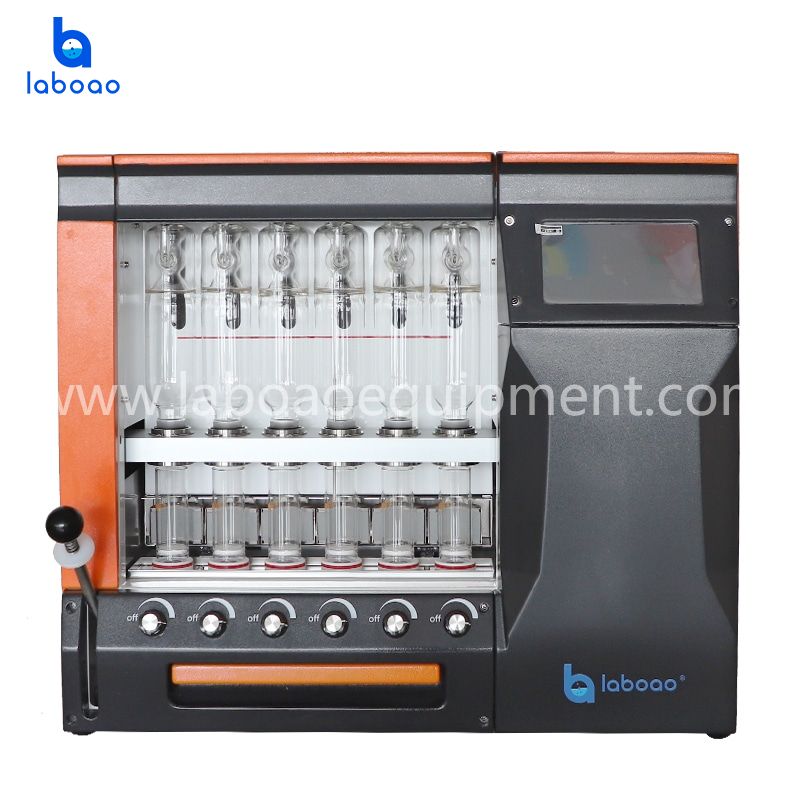FAQS
1. What are the main applications of nitrogen analyzers in those industries?
A: The nitrogen analyzer is mainly used to determine the content of nitrogen and crude protein in the sample. Mainly used in food, feed, agriculture, research institutes, medicine, universities, daily chemical, soil fertilizer, etc. Kjeldahl method for the determination of nitrogen and crude protein in samples.
2. What is the difference between automatic nitrogen analyzer and traditional manual method?
Answer: The automatic nitrogen analyzer does not require human intervention throughout the experimental procedure after setting the corresponding laboratory conditions. It has many advantages such as fast test speed, high efficiency, good parallel test results, and low risk factor.
3. How to ensure the recovery rate of the sample?
A: The main factors affecting the recovery rate are distillation time, alkali addition, excessive boric acid, complete digestion, and instrument sealing. Cooling water flow, water pressure, and water temperature are too high.
4. What are the classifications and differences of common nitrogen analyzers in the market?
A: There are many current classifications in the market. The most common classifications are:
1. Semi-automatic nitrogen analyzer: Only the distillation part does not contain titration. Titration requires manual titration. There are two types of semi-automatic currently available on the market:
1) manually add alkali, manually add water, manually control the distillation time.
2) Automatic addition of alkali, automatic hydration, automatic acid addition, no human intervention is required throughout the distillation experiment.
2. Fully automatic Kjeldahl nitrogen analyzer: integrated design of distillation and titration. After the sample is completely digested, the instrument is automatically added with water, automatically added with alkali, automatically hydrated, and automatically added with acid.
Automatic titration and result calculation printing. No human intervention is required throughout the experimental process, which greatly reduces the workload of laboratory personnel, improves work efficiency, and tests
The result is more accurate.
5. What are the faults and solutions that often occur during the use of the nitrogen analyzer?
A: 1. Alkaline pump and pipeline are blocked. The instrument should be cleaned and maintained frequently after use.
2. The steam generator has a short service life. Distilled or pure water must be used in the steam generator to avoid scale formation.
6. Can the nitrogen analyzer use other color indicators?
A: If you use manual titration, you can choose other color indicators. If a fully automatic instrument is used, the color indicator should be configured according to the ratio specified in the product, and other reagents should not be replaced. The built-in color change process of the product has been adjusted to the best condition at the factory to ensure the accuracy of the results.
7. Can the nitrogen analyzer be equipped with digestive tubes of different specifications and different manufacturers?
A: No, each manufacturer's digestive tract has standard sizes and specifications. The size is not the same as the matching of the machine. It is recommended to configure the digestive tube produced by the original factory.
8. Can the nitrogen analyzer be used for other distillation experiments in addition to determining the nitrogen content in the sample?
A: In theory, it is ok. The specific depends on different experiments, depending on the different needs of the experiment.
9. What does the sample recovery rate mean?
A: The sample recovery rate represents the accuracy of the instrument and also reflects the manufacturing process of the entire instrument. Therefore, the sample recovery rate is an important indicator for evaluating the quality of the equipment.
10. What are the special requirements of the nitrogen analyzer for the laboratory environment?
A: 1. It is necessary to ensure normal laboratory power supply.
2. must ensure that the water supply and drainage of the laboratory is smooth.
3. The instrument is placed at a distance of no more than 1.5m from the tap water source.
4. All digestive experiments must be carried out in a ventilated place in accordance with national regulations.
11. What is the cause of the cooling water flow and insufficient water pressure at the interface of the nitrogen analyzer?
A: The main reason for the shortage of cooling water flow and water pressure is that the laboratory tap water pressure is insufficient or the water tower is used, and the floor is too high. The booster pump can be added according to the specific conditions of the laboratory or the water pressure can be adjusted by itself.
12. How long is the life of the nitrogen analyzer?
A: The design life of the nitrogen analyzer is 10 years, depending on the amount of your own experiment and the daily maintenance.
13. When the boric acid absorption solution absorbs, there will be bubbles, which will affect the result.
A: No, because there will be bubbles in the process of condensation, which will follow the ammonia water into the absorption liquid. It is a normal phenomenon and has no effect on the experimental results.
14. What are the consumables and consumables of the nitrogen analyzer?
A: The wearing parts of the nitrogen analyzer are mainly digestive tubes. Because they are glass products, collisions and hanging rubs are inevitable during daily use. It is recommended to configure a part of the digestive tract. The consumables of the product are mainly reflected in the daily experimental reagents, mainly copper sulfate (catalyst) potassium sulfate (increasing the boiling point of sulfuric acid) concentrated sulfuric acid, boric acid, sodium hydroxide, hydrochloric acid and the like.
15. Does the Kjeldahl test still need other instruments?
A: Need, mainly the balance, drying oven, mortar, and related experimental glassware.
16. Can the nitrogen analyzer be used with different brands of digestion instruments?
A: It is necessary to determine whether the digestion aperture of the digestion instrument is consistent with the supporting manufacturer. In order to ensure the accuracy of the whole experimental results and the efficiency of the experiment, it is recommended to purchase the original compatible digestion instrument.
17. What is the definition of semi-automatic and fully automatic nitrogen analyzer?
A: Kjeldahl has three main steps: digestion, distillation, and titration.
The semi-automatic nitrogen analyzer has only a distillation part, and the fully automatic nitrogen analyzer refers to an all-in-one machine containing distillation and titration.
18. How to ensure the service life of Kjeldahl?
A: The service life of the nitrogen analyzer depends on the raw materials, processing technology and after-sales service adopted by different manufacturers. Because the Kjeldahl test involves many factors such as strong acid, alkali, high temperature, etc., the daily maintenance and maintenance of the instrument is also an important factor in determining the service life of the instrument.
19. What are the safety protection functions of the nitrogen analyzer?
A: 1. The digestive tract is not in place: When the digestive tract is not placed or placed improperly, it will alarm, effectively preventing the lye from being directly added to the instrument, thus ensuring the service life of the instrument.
2. Safety door protection: The main function of the safety door is to protect the safety of the experimental personnel and the instrument. When the safety door is not closed or the closing is not complete, the instrument will alarm and remind the experiment.
Room personnel were closed in time.
3. cooling water flow water pressure real-time detection: cooling water is the key factor for accurate and normal operation of the instrument. When the cooling water is insufficient, the water temperature is too high, the laboratory stops water, etc.
When the factors affecting the results of the experiment appear, the machine will automatically stop working and alarm.
4. Over-temperature alarm: When the temperature of the steam generator is too high, the instrument automatically stops working and alarms to ensure the safety of the instrument.
20. Does the nitrogen analyzer require the identification of the quality inspection department?
A: The nitrogen analyzer is not in the product catalogue of the national mandatory verification. It is not a measuring instrument, so it does not require the verification by the quality inspection department.
21. How to verify the accuracy of the nitrogen analyzer test results?
A: It can be calibrated with a standard sample of known sample content. Generally, the ammonia sulfate is commonly used for calibration and calibration of the instrument.

